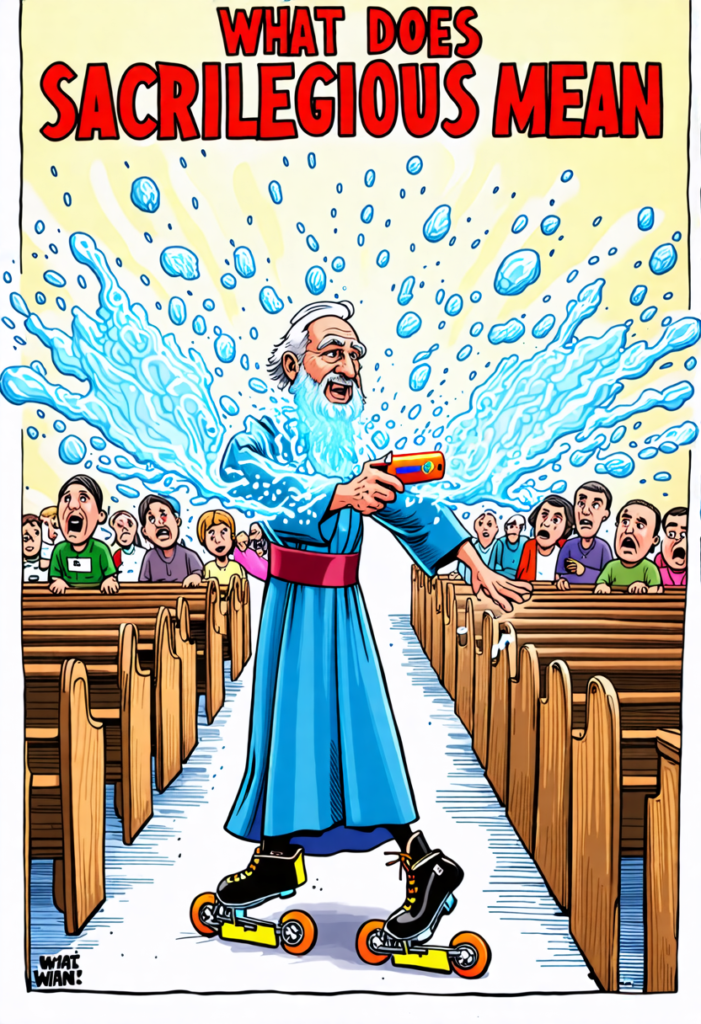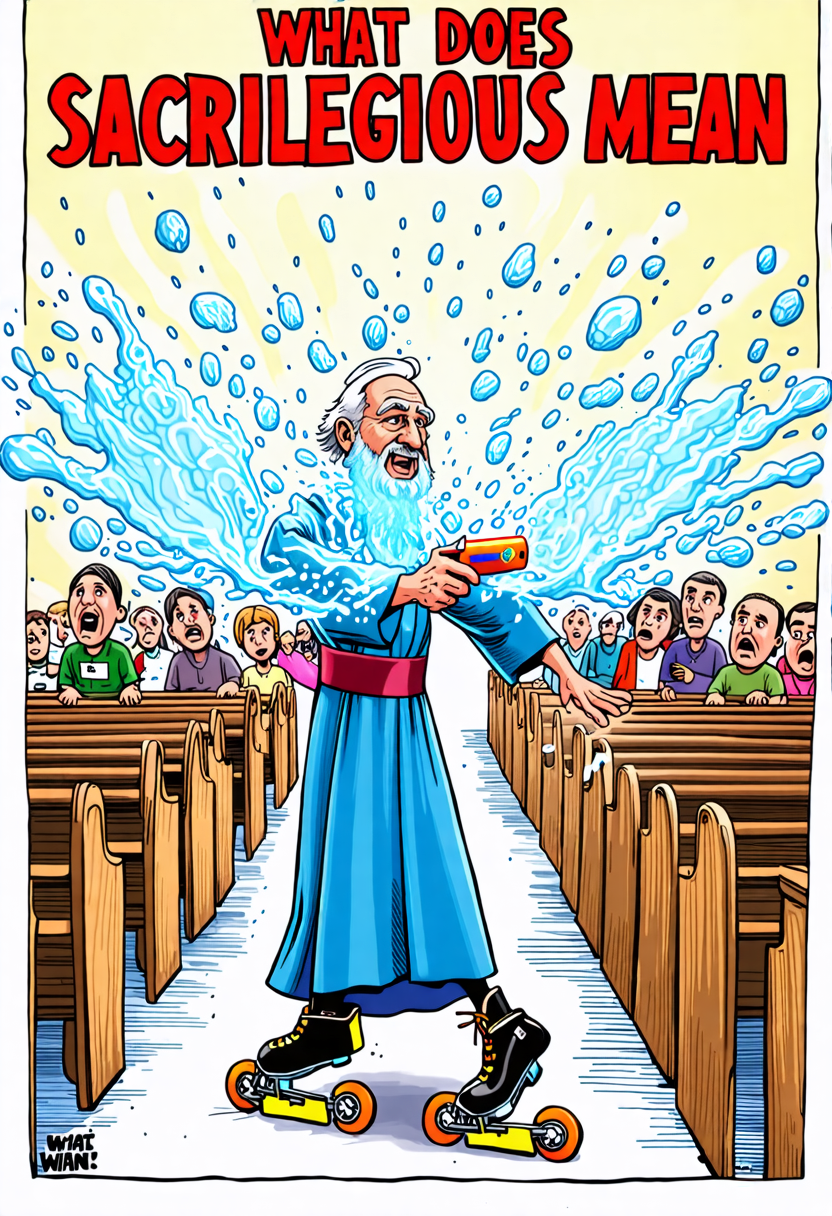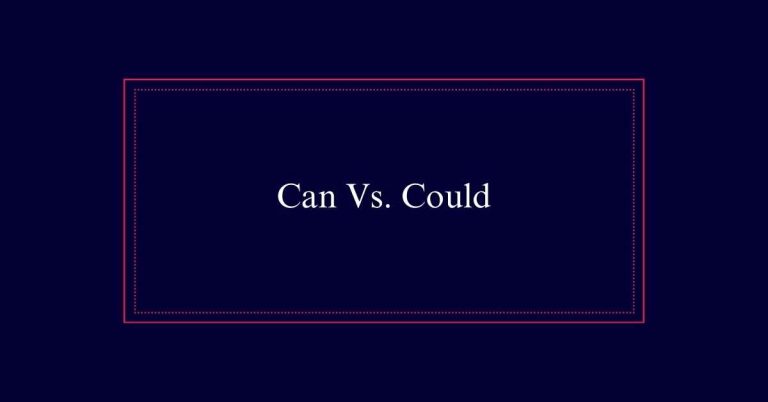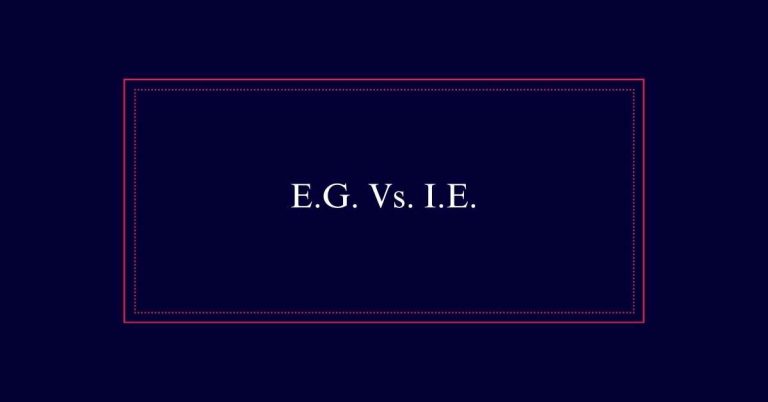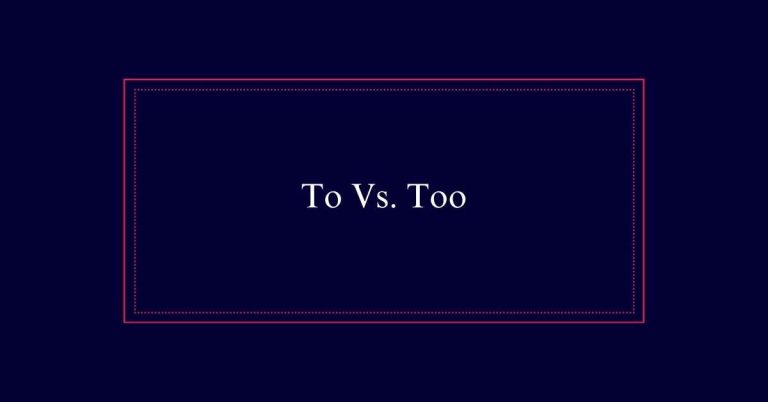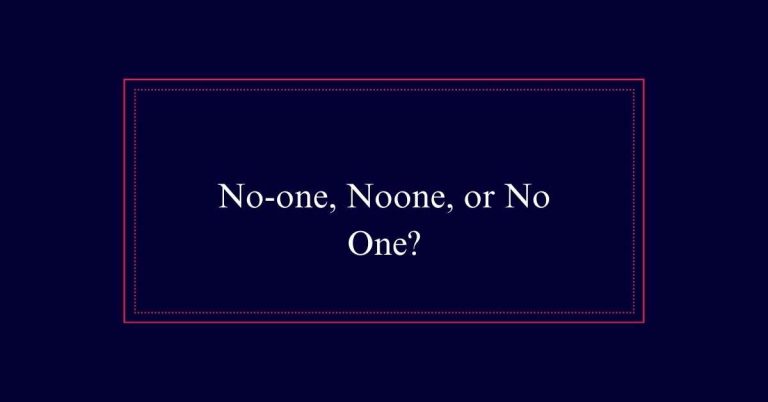What Does Sacrilegious Mean?
The term ‘sacrilegious’ refers to actions that show disrespect or irreverence towards something considered sacred or holy. This can include damaging religious monuments, mocking revered figures, or mishandling sacred texts. Acts of sacrilege can lead to public outrage and legal consequences, depending on cultural and religious contexts. It is important in many cultures to show reverence for what is regarded as sacred through respectful behavior and participation in rituals.
Definition of Sacrilege
Sacrilege is the act of showing disrespect towards sacred objects, places, people, dates, practices, or rituals. It involves actions that violate the sanctity of what is considered holy by a group or religion.
For instance, desecrating a religious monument or mocking a revered figure can be deemed sacrilegious. Sacrilege can also occur through ignorance or deliberate defiance, such as vandalizing a place of worship or disrupting a sacred ceremony.
The concept underscores the importance of respecting others’ beliefs and traditions. Even seemingly minor acts, like using sacred texts for non-religious purposes, can be considered disrespectful.
Understanding sacrilege helps maintain societal harmony by acknowledging the sacred elements valued by different communities.
What Is Sacrilegious?
Disrespecting sacred entities, whether through actions or words, is considered sacrilegious. This term applies to behavior that shows a lack of reverence for things deemed holy or sacred by a community. Sacrilegious acts can deeply offend those who value these sacred entities.
Examples of what might be considered sacrilegious include:
- Desecrating religious artifacts: Damaging or defacing items used in worship.
- Profaning sacred places: Misusing or vandalizing places of worship.
- Mocking religious practices: Making fun of rituals or ceremonies.
- Using sacred symbols inappropriately: Wearing or displaying religious symbols in a disrespectful manner.
- Disrespecting religious texts: Treating holy books with contempt.
Understanding what is sacrilegious helps foster respect for diverse beliefs and practices.
Examples of Sacrilegious Acts
Among the many acts considered sacrilegious, vandalizing a place of worship stands out as a clear example. This includes graffiti, defacement, or destruction of religious symbols.
Another example is desecrating sacred texts, such as burning or tearing holy books. Disrupting religious ceremonies is also sacrilegious. This could involve interrupting prayers or rituals with disrespectful behavior.
Building on ancient burial grounds without proper respect is another form of sacrilege. Additionally, producing media that mocks religious figures or beliefs can be considered sacrilegious.
Taking selfies during sacred rituals, such as pilgrimages, often sparks controversy. These actions show a blatant disregard for what others hold sacred, causing hurt and outrage within affected communities.
Sacredness and Respect
Respect for sacredness is fundamental in many cultures and religions. It involves honoring objects, places, and practices deemed holy or divine. Sacredness can manifest in various forms, and respect for it is shown through thoughtful actions and attitudes.
Rituals: Participating in or observing religious ceremonies.
Places: Visiting sites like temples, churches, and mosques with reverence.
Objects: Handling religious texts or artifacts with care.
Practices: Following cultural traditions and customs.
Symbols: Wearing or displaying symbols with respect, such as a cross or a prayer bead.
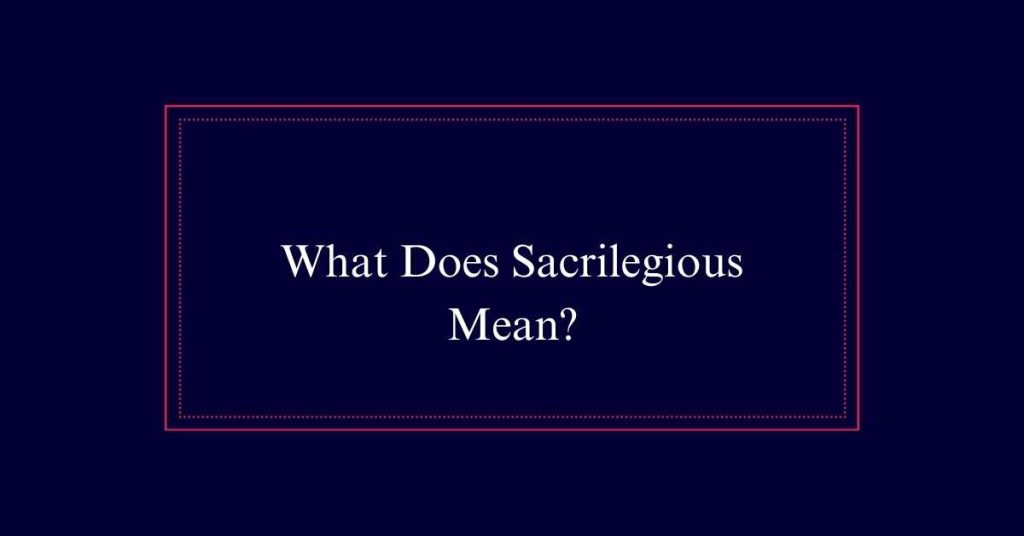
Societal Consequences
Acts of sacrilege can lead to significant societal consequences, including public outrage and legal repercussions. For instance, when a construction project threatens a sacred site, such as a tribal graveyard, the community often reacts strongly. Public condemnation can be swift, with media coverage amplifying the issue. Legal actions may also follow, as many jurisdictions have laws protecting sacred spaces and objects.
In Saudi Arabia, pilgrim selfies at the Kaaba have caused public complaints due to perceived disrespect. Such actions can spark heated debates about cultural and religious values. Ultimately, sacrilegious acts can fracture social cohesion, create conflicts, and trigger both societal and legal responses aimed at preserving respect for sacred entities.
Risks of Sacrilege
The societal consequences of sacrilege highlight the significant risks involved in disrespecting sacred entities. Sacrilegious acts can lead to severe repercussions. These risks are essential and can impact individuals, communities, and institutions in various ways.
- Legal Consequences: In certain jurisdictions, sacrilegious acts are punishable by law.
- Social Backlash: Acts of sacrilege can result in widespread public outrage and condemnation.
- Cultural Conflicts: Disrespecting sacred entities can ignite cultural tensions and conflicts.
- Institutional Repercussions: Entities like the military or religious institutions may take serious actions against sacrilegious behavior.
- Personal Safety: Individuals committing sacrilegious acts may face threats or harm from those who hold sacred beliefs dearly.
Understanding these risks is vital for maintaining societal harmony.
Public Reactions
Public reactions to sacrilegious acts often reveal the deep emotional and cultural significance of sacred beliefs. When someone disrespects sacred objects or places, the public response can be strong. Outrage, protests, and criticism are common. For example, building on a sacred site can lead to public demonstrations. Writing a controversial book can provoke debates and condemnation. Social media amplifies these reactions, spreading them quickly.
Here is a table illustrating common reactions to sacrilegious acts:
| Act | Public Reaction | Example |
|---|---|---|
| Building on sacred land | Protests | Construction on tribal graveyards |
| Controversial publications | Outrage and debate | Sacrilegious books |
| Disrespectful actions | Social media backlash | Selfies at religious sites |
Understanding these reactions helps in appreciating the depth of sacred beliefs.
Media Coverage
Media coverage plays a significant role in shaping public reactions to sacrilegious acts. News outlets report on incidents, influencing how communities perceive and react to them. The extent of coverage can amplify the perceived severity of the act, leading to widespread outrage or debate. Media platforms also provide a space for diverse opinions, allowing both condemnation and defense of the actions.
Instant Reporting: Media quickly informs the public about sacrilegious events.
Public Opinion: Articles and broadcasts shape public sentiment.
Debate Platforms: Media offers forums for discussing the implications.
Global Awareness: Coverage spreads awareness beyond local communities.
Influence on Policy: Extensive coverage can prompt legal and policy changes.
This dynamic illustrates the media’s power in shaping societal responses to perceived sacrilege.
Cultural Perspectives
Different cultures frequently have distinct views on what constitutes sacrilege. In Japan, stepping on a tatami mat with shoes is seen as highly disrespectful. Meanwhile, in India, touching a religious idol with dirty hands can be considered sacrilegious. In Native American cultures, desecrating sacred land, such as building on burial grounds, is deeply offensive.
Each culture defines its sacred elements uniquely, often rooted in historical and social contexts. For instance, public displays of affection might be seen as sacrilegious in more conservative societies. Understanding these cultural nuances is essential. It helps in avoiding actions that might be perceived as disrespectful.
Recognizing cultural perspectives on sacrilege fosters respect and harmony in diverse, global interactions.
Religious Views
Religious views on sacrilege often emphasize the importance of maintaining reverence for sacred entities and practices. Different religions have unique concepts of what is considered holy and how it should be respected. Consequences for sacrilegious acts vary, but they often involve moral, social, or spiritual repercussions.
Christianity: Desecrating a church or defiling the Bible is considered sacrilegious.
Islam: Disrespecting the Quran or sacred sites like Mecca is viewed as a grave offense.
Hinduism: Sacrilege could include damaging temple idols or sacred texts.
Judaism: Violating the sanctity of the Torah or synagogues is highly offensive.
Buddhism: Disrespecting Buddha images or sacred relics is seen as sacrilege.
These perspectives highlight the deep significance of sacred elements in religious life.
Legal Implications
Legal implications of sacrilegious acts can vary considerably depending on the jurisdiction and the specific nature of the offense. In some countries, laws explicitly protect sacred sites and objects. For example, vandalizing a church or mosque can lead to criminal charges and severe penalties. In contrast, other regions may have more significant laws or none at all regarding sacrilege.
In some cases, sacrilegious acts may fall under broader categories like hate crimes or public disorder. For instance, desecrating sacred texts might be prosecuted as incitement to religious hatred. Legal repercussions can also include civil suits for damages or injunctions to prevent further sacrilegious actions.
Understanding local laws is essential to avoid unintentional offenses and their serious consequences.
Frequently Asked Questions
How Do Modern Societies Handle Accusations of Sacrilege?
Modern societies handle accusations of sacrilege through legal measures, public condemnation, and media coverage. Laws protect sacred sites, while communities voice disapproval. Ethical debates balance free expression and respect for sacred beliefs.
Can Sacrilegious Acts Be Reconciled With Artistic Freedom?
Reconciling sacrilegious acts with artistic freedom involves balancing respect for sacred beliefs and the artist’s right to expression. Clear guidelines and mutual understanding can help navigate conflicts, ensuring both respect and creative liberty are maintained.
What Are the Psychological Impacts of Being Labeled Sacrilegious?
Being labeled sacrilegious can lead to significant psychological stress, including anxiety, social ostracism, and identity crises. Individuals may experience feelings of guilt, fear, and isolation, particularly if their actions conflict with deeply held communal beliefs.
How Do Educational Institutions Address Sacrilegious Content?
Educational institutions address sacrilegious content by promoting respectful discourse, setting clear guidelines, and implementing sensitivity training. They may also review and revise curricula to guarantee respect for diverse cultural and religious perspectives.
Are There Any Historical Examples of Sacrilegious Acts Leading to Significant Social Change?
Historical examples of sacrilegious acts leading to significant social change include the Protestant Reformation. Martin Luther’s criticisms of the Catholic Church’s practices were deemed sacrilegious, ultimately resulting in profound religious and societal transformations across Europe.
